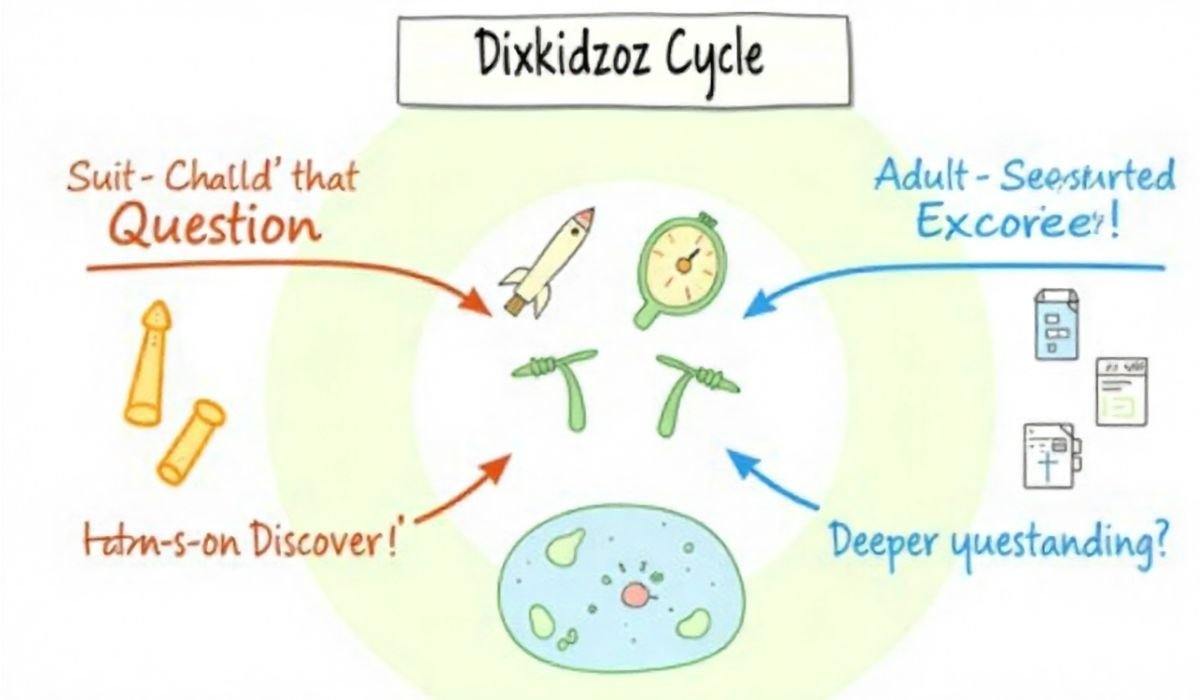Ever watch a child completely absorbed in a game of their own invention, turning a cardboard box into a spaceship and a spoon into a laser beam? In that moment of pure, unscripted play, something magical is happening in their developing minds. Now, imagine if you could harness that natural magic and intentionally weave it into their daily learning. What if I told you there’s a name for that exact approach? It’s called dixkidzoz, and it might just change how you think about your child’s development.
Forget rigid flashcards and boring drills. The dixkidzoz philosophy is like planting a garden of curiosity. You provide the soil (a rich environment) and the water (loving engagement), and then you step back to watch their unique talents blossom. It’s less of a formal curriculum and more of a mindset shift for parents and educators alike.
The Future of Learning is Playful: What Dixkidzoz Really Means
So, what exactly is this dixkidzoz approach? In a nutshell, it’s a framework for child-led, experiential learning that prioritizes process over product. It’s not about what a child makes, but what they learn and discover while making it.
Think of it this way: traditional education often asks, “Did you color within the lines?” A dixkidzoz-inspired approach asks, “Tell me about the world you’re drawing. What story does it tell?” This subtle shift empowers children, builds confidence, and strengthens neural pathways in a way that rote memorization simply can’t.
Here’s a quick breakdown of its core principles:
- Follow the Child’s Lead: Notice your toddler is fascinated by bugs in the garden? That’s your dixkidzoz moment! You’ve just found your “lesson plan” for the day.
- Embrace the Messy Middle: The value is in the exploration, not a perfect final product. Spilled glue, mixed paint colors, and lopsided clay sculptures are all signs of active learning.
- Integrate, Don’t Isolate: Learning isn’t split into separate subjects. A single baking activity involves math (measuring), science (chemical reactions), and literacy (reading a recipe).
Top 3 Ways to Bring Dixkidzoz into Your Home Today
You don’t need fancy tools or a teaching degree to embrace this method. It’s about using what you have and seeing the world as your classroom. Your words must dance with possibility, not dictate instructions.
1. Create an “Invitation to Create” Station.
Instead of directing an art project, set out open-ended materials and let your child’s imagination take over. On a tray, place a few leaves, some yarn, a blank paper, and a glue stick. Then, walk away. The goal isn’t to make a specific craft, but to see what they invent. This is dixkidzoz in its purest form.
2. Turn Errands into Learning Quests.
A trip to the grocery store is a goldmine for dixkidzoz-style learning.
- For a toddler: “Can you find three things that are the color red?”
- For a preschooler: “Let’s count how many steps it takes to get from the dairy aisle to the bread aisle.”
- For an older child: “Which of these two cereals is a better value? Let’s look at the price and weight.”
3. The “Yes, And…” Game for Problem-Solving.
This classic improv game is a dixkidzoz powerhouse for developing critical thinking. If your child says, “My tower keeps falling down!” instead of fixing it for them, say, “Yes, it’s falling down, and what could we use to make the base wider?” This validates their struggle and guides them to find their own solution.
Real-World Success: How The Little Explorers Preschool Made It Work
You might be thinking, “This sounds great in theory, but does it actually work?” Let’s look at a real-world example. The Little Explorers Preschool in Austin, Texas, fully integrated the dixkidzoz philosophy into their classrooms. They replaced pre-printed worksheets with sensory bins, building stations, and nature exploration kits.
The results were staggering. Within six months, teachers reported a 40% increase in student-led questions and a noticeable improvement in children’s ability to collaborate and solve conflicts independently. One parent, Sarah Jenkins, remarked, “My daughter used to ask, ‘Is this right?’ Now she proudly says, ‘Look what I figured out!'” That’s the dixkidzoz difference in action.
Read also: RemixPapa Study: Stop Cramming, Start Remixing Your Way to Smarter Learning
Your Action Plan: 3 Things to Try Tomorrow
Ready to dip your toes into the world of dixkidzoz? You don’t need to overhaul your life. Start small with these actionable takeaways.
- Observe for One Day: Just watch your child. What are they naturally drawn to? Dinosaurs? Puddles? Building forts? That’s your starting point.
- Ask Open-Ended Questions: Swap “What is it?” for “Can you tell me about your creation?” Swap “Good job!” for “I see you worked really hard on that.”
- Embrace One “Messy” Activity: Set aside 30 minutes for an activity with no “right” way to do it—like play-doh, water play, or building a pillow fort. Your only rule is to have fun.
The goal of dixkidzoz isn’t to create child prodigies; it’s to raise curious, resilient, and joyful lifelong learners. It’s about giving them the tools to navigate an unpredictable world with creativity and confidence.
What’s one playful moment you’ve shared with your child recently that, looking back, felt like a dixkidzoz moment?
FAQs
Q1: Is dixkidzoz just another word for unstructured play?
Not quite. While unstructured play is a vital component, dixkidzoz is more intentional. It’s about the adult’s role in carefully preparing the environment and observing the child to provide materials and experiences that extend their natural interests.
Q2: My child’s school is very academic. Can I still use this at home?
Absolutely! In fact, dixkidzoz is the perfect counterbalance. The skills it builds—critical thinking, creativity, problem-solving—will positively support their more formal academic work by making them more engaged and resilient learners.
Q3: Is there an age limit for dixkidzoz?
The principles are most commonly applied to early childhood (ages 1-8), but the core ideas of hands-on, interest-led learning are effective and adaptable for learners of all ages.
Q4: This seems messy and time-consuming. Any tips for busy parents?
Start small! You don’t need to do it all day, every day. A 20-minute “invitation to create” while you make dinner counts. The focus is on quality of engagement, not the quantity of time.
Q5: Where can I find more dixkidzoz-inspired activity ideas?
Follow educators and child development specialists on social media, look into Reggio Emilia or Montessori-inspired resources, and most importantly, learn to see the potential for learning in your own home—a laundry basket can be a boat, and measuring rice can be a math lesson.
You may also like: Beyond Four Walls: Why Classroom 15x is the Future of Learning (And How to Build It)











